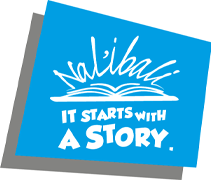Omphile is a 13-year-old Grade 7 learner at Prinshof School for blind and visually imapired children. She has congenital glaucoma and therefore has limited eyesight. Omphile has always enjoyed reading – perhaps because everyone else in her family reads – and would like to encourage adults and older caregivers to help other blind or visually imapired children experience the joy she has found in books:
We all know that the more kids read, the better they read and the more pleasure they get out of reading. Unfortunately, this also means that the less kids read, the poorer their reading skills will be and the less pleasure they will get out of reading. Add to this the special challenges that blind and visually impaired children face, and you start seeing a gloomy picture of hundreds of children who will never experience the joy of reading.
What discourages blind and visually impaired children from reading? The short answer is that it’s all the things that discourage sighted children, plus a few additional ones. Like sighted children, blind children will not read if they don’t have books to inspire or delight them or if they find reading too difficult.
There just aren’t enough interesting books available in braille. Most bookshops and libraries do not have anything for blind or visually impaired children. If your school or family does not have easy access to audio-books and special libraries that cater for the blind, then all you have are your school notes.
How can adults make reading fun for us? I think the earlier blind children are introduced to the world of words, the better. Moms and dads can read to them, teach them how to interact with other people through words and describe the beautiful scenery as they drive around with them. Before the child learns how to read braille, you can let them “borrow” your eyes by reading to them, guiding them to touch, smell and hear the things you are talking about.
Even for us as older children, adults can make our reading experience more fun by linking it to hands-on activities. Sighted children have more opportunities for incidental learning because they see everything around them. We, on the other hand, rely on sighted people to help us experience the things that we have been reading about in class. For us to reach the same level of literacy as sighted children, we need a richer environment and a wider vocabulary. At some Wimpy restaurants, for example, they have menus in braille and it is really exciting for my blind friends to be able to choose their own meals on the menu.
Because I am not completely blind, I have lots of books to read. My book collection includes everything from Enid Blyton’s Secret Seven to Rachel Renêe Russell’s Dork Diaries. I am also involved in the reading and writing activities that are part of my family’s daily routine like reading out mom’s recipes when she cooks. In an ideal world, my blind friends would also be able to do all that.
